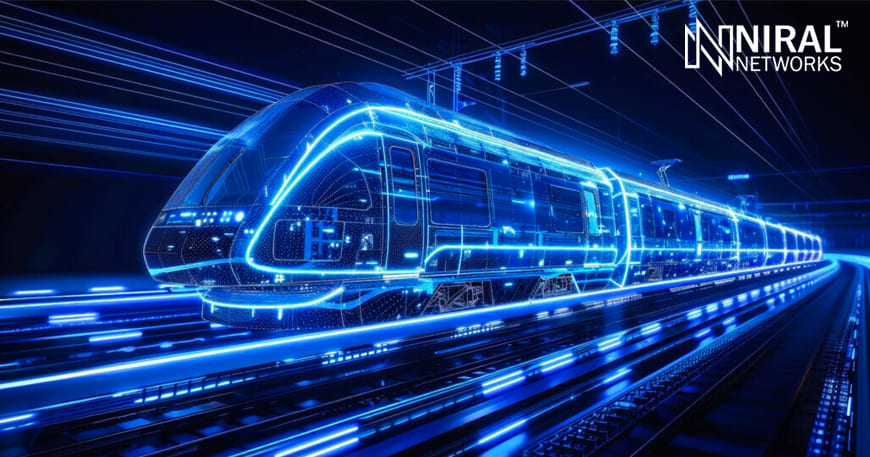In an era where connectivity is king, the rail industry is embarking on a digital journey that promises to transform the way we think about train travel. Private 5G networks are emerging as the game-changer, offering railways unprecedented control, security, and performance. Let’s explore how this cutting-edge technology is making tracks in India and around the globe
The Private 5G Advantage for Railways
Imagine a railway system where every train, every signal, and every station is seamlessly connected in real-time. That’s the promise of private 5G. Unlike public networks, private 5G offers:
- Ultra-low latency: Critical for obstacle detection and autonomous operations.
- Enhanced security: Vital for protecting sensitive operational data.
- High bandwidth: Perfect for onboard Wi-Fi, passenger infotainment, and HD surveillance.
- Network slicing: Allowing prioritization of mission-critical services.
India on the Fast Track
India, with one of the world’s largest railway networks, is not letting this opportunity pass by. The Indian Railways has been vocal about its ambitions to modernize, and private 5G is at the heart of this vision.
In 2023, the Department of Telecommunications (DoT) allocated spectrum for captive non-public networks, paving the way for private 5G in various sectors, including railways. Cities like Pune are already testing private 5G for smart traffic management, a technology that could soon extend to rail corridors.
Imagine real-time monitoring of Mumbai’s bustling local trains or predictive maintenance for the iconic Darjeeling Himalayan Railway. Private 5G could make these a reality, enhancing safety, punctuality, and the overall passenger experience.
Global Railways Riding the 5G Wave
Across the oceans, the adoption of private 5G in railways is gathering steam:
- Germany: Deutsche Bahn is piloting a private 5G network in Hamburg for automated train operations. They aim to increase capacity on existing tracks by up to 30%.
- Japan: Ever the tech pioneer, Japan is using private 5G to monitor track conditions in real-time. Sensors along the famous Shinkansen lines detect even the slightest anomalies, ensuring those bullet trains stay lightning-fast and incredibly safe.
- United Kingdom: Network Rail is exploring private 5G for its ERTMS (European Rail Traffic Management System) upgrade. This could lead to more trains per hour and fewer delays on busier routes like London to Edinburgh.
- Australia: The mining sector, which heavily relies on rail for ore transportation, is adopting private 5G for autonomous trains in remote areas, boosting efficiency and worker safety.
The Road (or Rail) Ahead
As we hurtle towards a more connected future, private 5G in railways isn’t just about faster data. It’s about smarter, safer, and more sustainable transport. From predictive maintenance that reduces downtime to energy-efficient driving powered by real-time data, the benefits are as vast as the rail networks themselves.
In India, as the government pushes for initiatives like “Digital India” and “Make in India,” private 5G could be the catalyst that propels Indian Railways into a new era. It’s not just about competing with global standards; it’s about setting them.
So, the next time you board a train, whether it’s a local in Chennai or a TGV in France, remember: beneath your feet and behind the scenes, a private 5G network might just be ensuring your journey is smoother, safer, and smarter than ever before. All aboard the 5G express!





